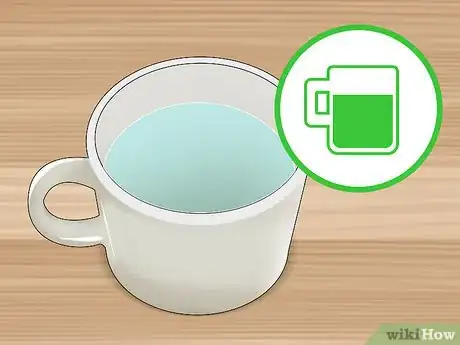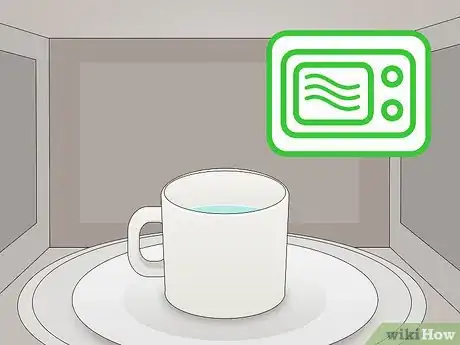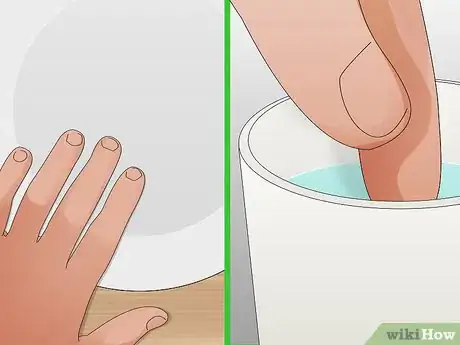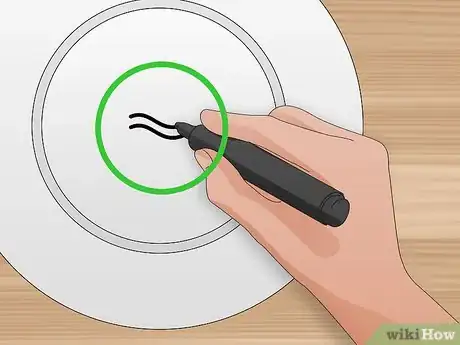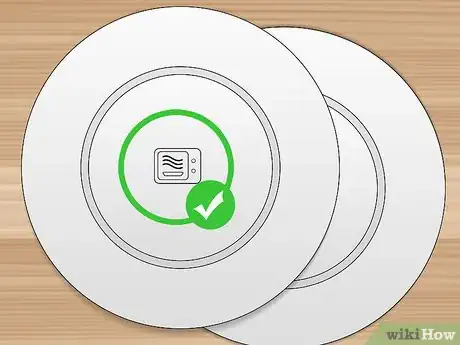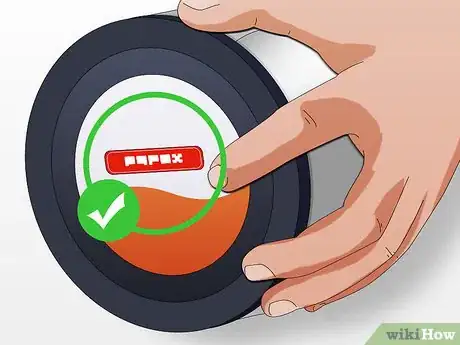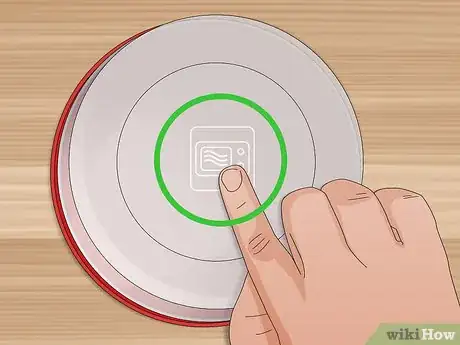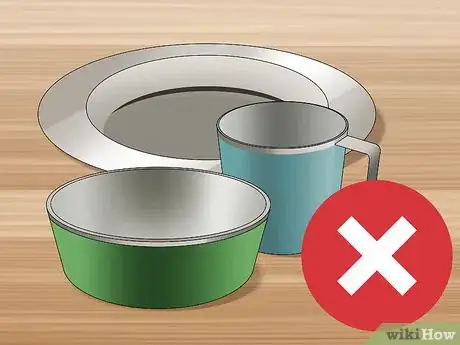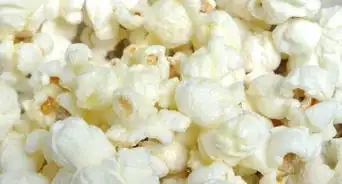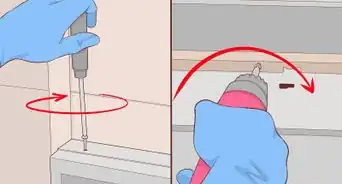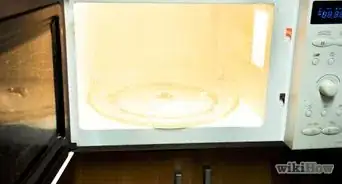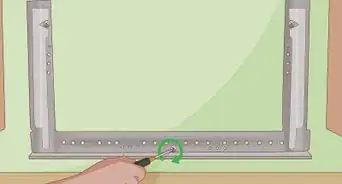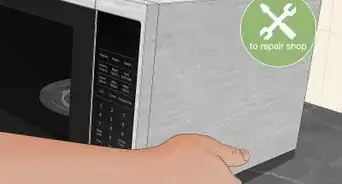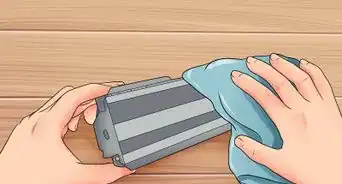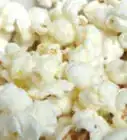This article was co-authored by Raymond Chiu. Raymond Chiu is the Director of Operations for MaidSailors.com, a residential and commercial cleaning service based in New York City that provides home and office cleaning services at affordable prices. He has a Bachelors in Business Administration and Management from Baruch College.
There are 7 references cited in this article, which can be found at the bottom of the page.
wikiHow marks an article as reader-approved once it receives enough positive feedback. In this case, 82% of readers who voted found the article helpful, earning it our reader-approved status.
This article has been viewed 467,944 times.
There are a number of reasons why you shouldn’t microwave dishes and materials that aren't safe for the microwave. Non-microwaveable materials can melt, crack, or be otherwise damaged in the microwave, and they can also leak dangerous chemicals into your food, cause fires, or damage the microwave itself. Not all dishes that are microwave safe are labeled as such, so it’s a good thing there's an easy test you can use to determine if a dish is safe to use.
Steps
Testing the Dish
-
1Fill a cup with water. To test if a dish is microwave safe, you can put it in the microwave with a cup of water. Find a glass or cup that is microwave safe, and fill it three-quarters of the way with water.
- It’s important to use a cup that you know to be safe for the microwave, otherwise the test may not work.
- To be certain, find a cup that has the microwave safe stamp on the bottom.
-
2Microwave the dish with the glass of water. Place both the glass of water and the dish in question side by side in the microwave. Microwave the two items together on high power for one minute.
- If the dish is too large to sit side by side with the cup, place the cup on top of (or inside) the dish.
- To increase the power on your microwave to high, look for a button that says Power, Menu, or Settings.[1]
Advertisement -
3Perform a touch test. After a minute in the microwave, use oven mitts or a potholder to remove the cup of water. Then, place your hand on the dish in question to feel how warm it is:[2]
- The dish is unsafe for the microwave if the dish is warm and the water is cold. A warm dish means it absorbs heat.
- The dish is safe for the microwave if the dish is cool and the water is warm. A cool dish means it doesn’t absorb heat.
- Note that the dish may feel warm in the center if you had the cup of water in or on the dish.
-
4Label the dish. In order to keep track of which dishes are microwave safe and which aren't, use a permanent marker to label the bottom of the dish with the results of your test.[3]
- You can use any labeling method you like for your dishes. For instance, you can mark microwave-safe dishes with a happy face, the letter M, or two wavy lines.
- Don’t forget to label dishes that aren't safe for the microwave as well. You can use an unhappy face, an M with a line through it, or some other indication.
Recognizing Microwave Safe Materials
-
1Look for the microwave safe label. The easiest way to know that a dish or utensil is microwave safe is by looking for the stamp on the bottom.[4] There are typically three things that will indicate a dish is safe to use:[5]
- The words “microwave safe”
- The words “microwave friendly”
- Wavy horizontal lines
-
2Know that most ceramic, glass, and china can go in the microwave. Most ceramic, glass, china, and porcelain dishware is safe for use in the microwave. The exceptions are if:[6]
- The manufacturer states that the dishes are not microwaveable
- The dishware has metal paint or decorations, such as gold or silver trim[7]
- Lead glaze was used
-
3Recognize microwave-safe names. There are several manufacturers out there that make heat-proof cookware that is also safe for use in the microwave. Some of the companies that make these items are:
- Anchor Hocking
- Duralex
- Pyrex
- Corningware
- Visions
-
4Know that you can microwave some paper products. Some paper products are safe to microwave, including parchment and wax paper, and white paper plates, napkins, and towels.
- To make sure that no inks or dyes leach into your food, don’t use paper products with printed matter, logos, or writing on them.
-
5Understand when and how to microwave with plastics. Some plastic dishware and wraps have been made especially to be safe for microwaving, and these don’t contain plasticizers that can leach into food.
- If you want to microwave plastic dishware, make sure it says it’s microwave safe. If it doesn’t say it, don’t use it.
- When you use microwave safe plastic wrap in the microwave, make sure it’s not touching your food directly.[8]
Avoiding Materials That Cannot Be Microwaved
-
1Don’t microwave metals. Unless you follow a very strict safety protocol, it’s not safe to microwave metal. Putting metal in the microwave can lead to sparking, fires, and a malfunctioning unit. Be sure to watch out for:[9]
- Dishes and cups with metallic paints
- Dishes and cups with decorative metal trim
- Wire twist ties
- Take-out containers with metal lining or handles
- Aluminum foil
- Metal utensils
-
2Recognize dishes with lead glaze. Lead glaze used to be common for lots of dishware, and is still used in many countries. You should not use dishes with lead glaze to hold or serve food, because the lead can transfer to your food. Lead is extremely toxic and consuming lead is hazardous to your health. If you microwaving dishware with lead glaze, even more lead can leach into the food. Dishes that are likely to have lead glaze include:[10]
- Clay dishware with a shiny or transparent glaze
- Handmade artisan dishware
- Dishware with bright and vibrant colors on the inside surfaces
- Antique dinnerware
- Highly decorative and shiny dishware
-
3Do not microwave cold-food storage containers. Plastic food containers that are meant for refrigerated items are not meant to be heated, and are certainly not designed for the microwave. This includes containers made for:
- Yogurt
- Butter or margarine
- Cottage cheese
-
4Avoid brown paper products. The USDA Food Safety and Inspection Service states that while it is safe to microwave white paper products, brown paper products should not be microwaved.
- This includes brown paper lunch bags and brown paper towels.
- The same site recommends not microwaving newspaper.
Expert Q&A
-
QuestionWhat materials are not microwave safe?
 Raymond ChiuRaymond Chiu is the Director of Operations for MaidSailors.com, a residential and commercial cleaning service based in New York City that provides home and office cleaning services at affordable prices. He has a Bachelors in Business Administration and Management from Baruch College.
Raymond ChiuRaymond Chiu is the Director of Operations for MaidSailors.com, a residential and commercial cleaning service based in New York City that provides home and office cleaning services at affordable prices. He has a Bachelors in Business Administration and Management from Baruch College.
House Cleaning Professional Metal, styrofoam, ceramic, and chinaware with metal trim should never be microwaved. Some plastic materials can be microwaved, but many of them cannot. It's important to read the label on the bowl before putting it in the microwave if you are unsure.
Metal, styrofoam, ceramic, and chinaware with metal trim should never be microwaved. Some plastic materials can be microwaved, but many of them cannot. It's important to read the label on the bowl before putting it in the microwave if you are unsure. -
QuestionAre printed glass bowls safe in microwave?
 Community AnswerMost glassware is safe to use in the microwave. The exception is glass with metallic paint or glaze or metal rims. If you're not sure about the type of paint or glaze, avoid microwaving that dish. If you don't suspect metallic paint or glaze, you can test perform the microwave test with a glass of water and see if the bowl heats up.
Community AnswerMost glassware is safe to use in the microwave. The exception is glass with metallic paint or glaze or metal rims. If you're not sure about the type of paint or glaze, avoid microwaving that dish. If you don't suspect metallic paint or glaze, you can test perform the microwave test with a glass of water and see if the bowl heats up. -
QuestionCan I use my old arcoroc dishes from the 1970's in the microwave?
 Community AnswerNo, because they can get ruined in the microwave.
Community AnswerNo, because they can get ruined in the microwave.
References
- ↑ https://www.overstock.com/guides/how-to-tell-if-something-is-microwave-safe
- ↑ http://products.geappliances.com/appliance/gea-support-search-content?contentId=16869
- ↑ https://dengarden.com/appliances/How-to-Test-the-Microwave-Safety-of-Dishes
- ↑ Raymond Chiu. House Cleaning Professional. Expert Interview. 15 October 2019.
- ↑ http://dishwashers.reviewed.com/features/what-the-symbols-on-your-tupperware-really-mean
- ↑ https://www.overstock.com/guides/how-to-tell-if-something-is-microwave-safe
- ↑ Raymond Chiu. House Cleaning Professional. Expert Interview. 15 October 2019.
- ↑ http://www.berkeleywellness.com/healthy-eating/food-safety/article/11-facts-about-microwave-safety
- ↑ https://dengarden.com/appliances/How-to-Test-the-Microwave-Safety-of-Dishes
About This Article
To test if a dish is microwave-safe, look for a symbol with wavy horizontal lines on the bottom, which indicates the material is heat-safe. If you don't see the stamp but you know your dish is made of ceramic, glass, or china, it can probably be used safely in a microwave. If you want to double-check, put the dish and a cup of water inside the microwave and zap them together on HIGH for 1 minute. If the dish is warm and the water is cold, the dish isn't microwave-safe. To learn about materials that should never be microwaved, read on!
